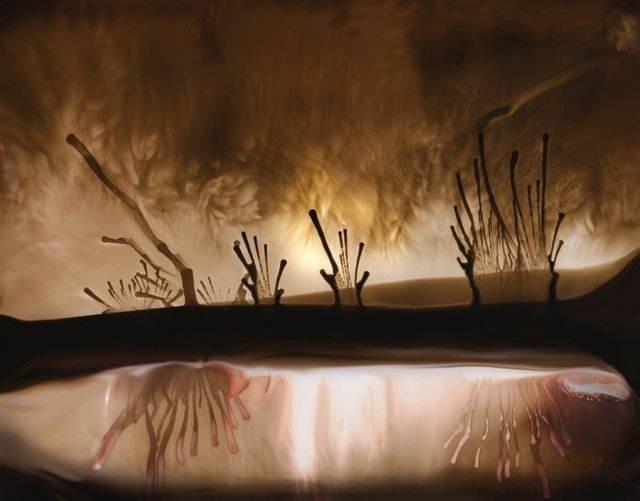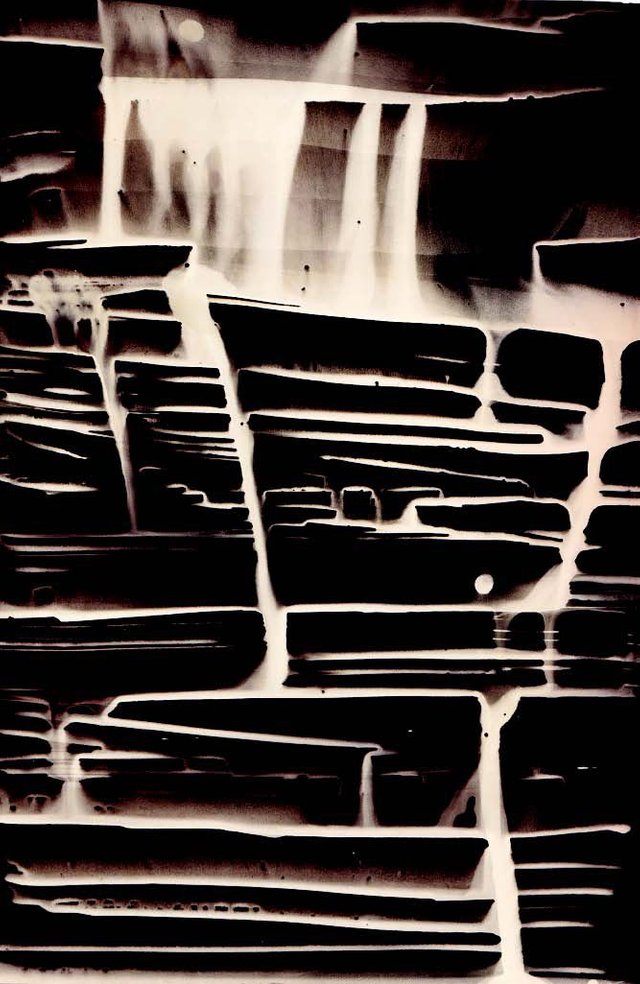No Camera? No Problem!

Awaken your inner painter as you let your imagination run wild while creating chemigrams.
Photography means painting with light. Chemigrams, on the other hand, involve painting with chemicals. Belgian artist Pierre Cordier has been credited with the creation and development of this technique in 1965. Chemigrams are slightly more complex to create, as they require the direct use of chemicals on photosensitive paper. Always use protective gloves while handling chemicals. They can prove to be irritants.
What is a Chemigram?
These images are created with the use of chemicals used in silver halide photography, namely developer and fixer. This technique involves painting these chemicals over a photosensitive paper to create surreal compositions. Oils, varnish and other colours can also be used with chemicals.
Difficulty Level: 4/5
Make a Piece of Art
Chemigrams are a collision of two art forms—painting and photography. No two chemigrams ever look the same. The chemicals react differently each time, giving you completely different results. Thus, chemigrams are, in effect, single edition works of art.
*ALONG WITH CHEMICALS, YOU CAN ALSO USE PAINTS, OILS AND VARNISH FOR MORE EFFECTS.*

Let the world around you inspire the chemigrams you make. Recreate life your own way with this technique.
Creating with Care
Unlike other ‘cameraless’ photography procedures, a chemigram is created in a completely lit room, as the light, here, acts as a developing agent. The equipments involved in making a chemigram are those that are used in traditional silver halide photography, that is, photosensitive paper and chemicals like developer and fixer.
With chemigrams, you can really let your imagination run wild. In fact, you can apply these chemicals on the paper in any way you wish—paint them with a plastic brush, spraypaint them, or even drop them as blobs on the paper. Create shapes and patterns, and keep experimenting for different looks. You can also employ paints, oils and varnish for additional effects.
STORE FINISHED CHEMIGRAMS IN A ROOM WITH A CONSISTENT TEMPERATURE, OR THE CHEMICALS WILL CONTINUE TO REACT.

Using additional paints with the chemicals will give you results with varied hues and textures.
Varied Results
Once you are completely satisfied with your image, use fixer to stop the chemigram process. These chemicals react differently under different conditions, even after you have finished creating your chemigram! Immersing the print in a tray, under running water, for a few minutes, will ensure that your chemigrams react more slowly to the ambient environment.
However, room temperature, emulsion of the light-sensitive paper and external lights can affect the tones in your chemigram, over a period of time. This is not necessarily a bad thing, though. Imagine a work of art that keeps changing as time passes!